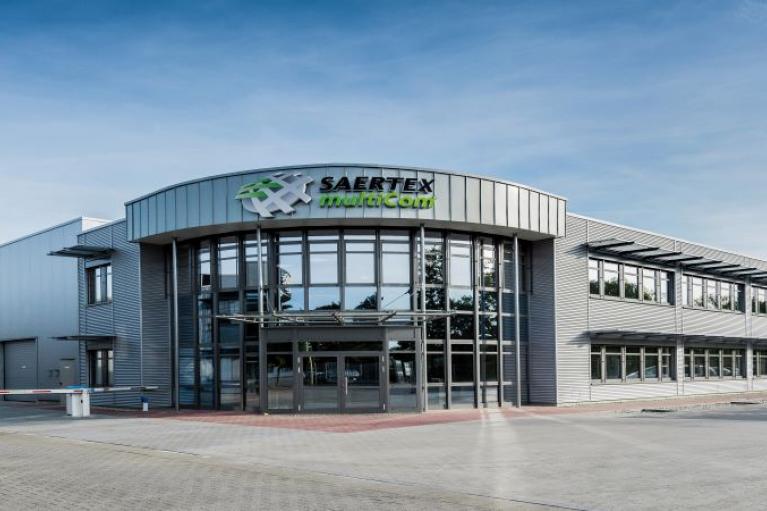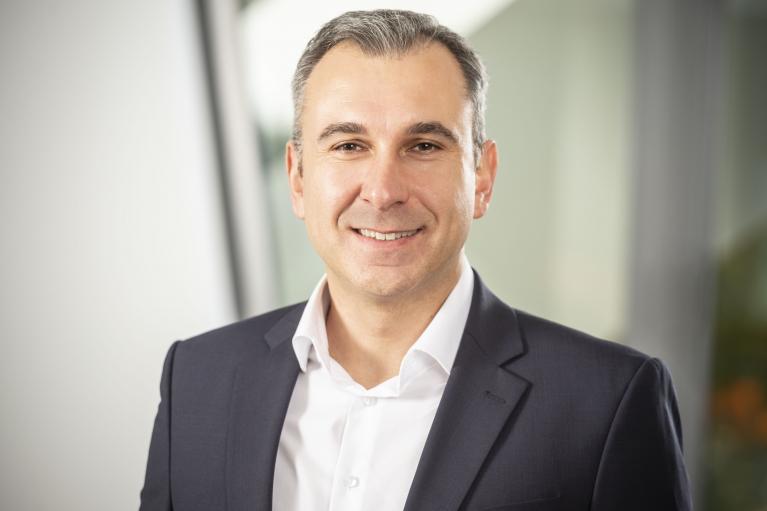Interview with SAERTEX multiCom Managing Director Kai Diecks
Just over a year ago Kai Diecks became Managing Director of SAERTEX multiCom. We spoke to him about the company’s new course and the prospects for the pipe liner manufacturer from Saerbeck.
B_l umweItbau: Mr. Diecks, you left your parent company SAERTEX just over a year ago and took up your new position as Managing Director of SAERTEX multiCom. You came to sewer rehabilitation virtually as a lateral move. What was your unbiased view of this industry, with its special dynamics and peculiarities?
Kai Diecks: Sewer rehabilitation was not an entirely new subject to me. I was previously responsible at the SAERTEX Group for central purchasing and logistics and I also supported SAERTEX multiCom in this function. And during my interim job for the geotextile company Huesker Synthetic, I was also intensively involved with the construction industry. My experience of sewer rehabilitation is that it is a very dynamic environment in which people deal with each other in a tough way, but above all in a familiar, almost family-like atmosphere. I find this very engaging and it reminds me of the time when I started at SAERTEX in 2002, in the pioneering days of wind power. While this industry is now dominated by large corporate groups, sewer rehabilitation has retained this familiar togetherness and dynamics. I am really pleased to say that the situation is similar at SAERTEX multiCom, too.
In your new role, what did you initially consider to be priority challenges for you and for SAERTEX multiCom?
First of all, it was important for me to get to know the employees. Who does what, what is our organizational structure, what are our strengths and ideas, where do we stand today – these were the subjects of my initial intensive discussions. From the beginning I was impressed with the professionalism and drive of the people who work here and with the level of know-how behind the company.
Once you had gained your initial impressions, where did you think corrections were required to the company’s course?
At an innovative company there are always more ideas than there are resources to implement them. I therefore thought it very important for our management team to develop a clear strategy of how we will run the company together – with clear objectives and priorities for ideas with the greatest benefit for us and for our customers.
The pipe liner market does have its particularities. Nearly all of the relevant manufacturers are based in Germany and high production capacities have been built up there –especially with a view to international business. How do you assess the market situation and where do you see opportunities and challenges for SAERTEX multiCom?
I think the market is a positive one for our technology. We are operating in a market with huge growth potential – including in Germany. There is still plenty for us to do, especially in the field of potable water pipeline rehabilitation. But also in the field of sewer rehabilitation. And I also think that we – together with the Pipeline Rehabilitation Association (Rohrleitungssanierungsverband) – need to draw attention to the investment backlog in this “invisible” part of our country’s infrastructure.
Compared to the wastewater sector, the field of pressure pipes, in particular for potable water and gas, is a completely different world for the client and executing company. How are you dealing with this?
Demand is developing very positively for us here. We now have over 300 installations in Spain, Italy, America, South America and Asia – and naturally in Germany too. But you are absolutely right – it is a completely different market. Accordingly, we are also approaching things differently. In addition to the high product-side requirements in terms of hygiene and approvals, we think there is a particular requirement for turnkey solution packages for our customers.
Practically all areas of life are currently being affected by the coronavirus pandemic. What effects are you feeling at SAERTEX multiCom?
Our hygiene concept for protecting our employees and business partners has worked well and has allowed us to weather the crisis very effectively so far. In business terms, we have remained capable of delivering throughout the pandemic and we will achieve a result this year which will match the record level of 2019. We had hoped for greater growth in 2020, but in some markets with complete lockdowns, such as France, we were forced to stay abreast of developments. We are feeling this, but overall we cannot complain and are grateful for the way things have gone so far.
From a technical perspective there has been a considerable amount of movement in the field of light-cured pipe liners in recent years. I would like to highlight two trends: Firstly, improved material properties make it possible to reduce wall thicknesses – a development that is viewed critically by some industry experts. And secondly, it has been possible to achieve increasingly larger diameters. Where do you think SAERTEX multiCom is positioned technically in terms of its products?
In terms of material properties and reduced wall thicknesses there was previously a real push in the direction of “higher – faster – further”, together with something amounting to an outbidding competition. I think these times are now behind us. With the glass fiber know-how of the large SAERTEX parent company in the background, we have a unique advantage when it comes to improved material properties. But I do not think it expedient to continue to push this development to extremes. Quality is ultimately what the customer needs. Our objective is to develop products that will precisely meet the requirements of our customers.
"Pressure pipes are a future market for us with great potential and growing demand internationally."
"When it comes to training, we're going to take a completely new approach."
What is the current upper diameter limit at SAERTEX multiCom?
We manufacture up to DN 1600. We know that other manufacturers can go larger and I consider that up to DN 1800 would also be appropriate for us. However, this would require some effort in terms of machine engineering and it is currently not our highest priority. At this time it is more important for us to ensure optimum project security. Our development objective is to make installation simpler and faster. We are making great progress there right now.
Can you specify in more detail the direction in which you have developed?
I have already outlined our endeavors in terms of pressure liner development – as for the rest, it would be best to ask us again at the Ro-Ka-Tech (laughs)! But seriously: We are currently making great progress in various areas but will only publicize this when development work is complete and the product is implementable for customers. This underlines our commitment to quality. However, I can tell you that we are also working intensively on the issue of more sustainable solutions in addition to improved project security and faster installation of our GFRP pipe liners. I am confident that we will have set real milestones in terms of sustainability before Ro-Ka-Tech – or, more accurately, by spring 2021.
How do you think you are positioned to meet the challenges of the future?
With the changes we have implemented over the past year we consider ourselves to be well-positioned for the future. These relate to our organizational structure, the processes and procedures in production and sales. This also applies to digitization at our company. We have made great progress in this area which helps us to become better and faster. This also ultimately relates to our innovative strength. And here we have plenty of exciting things in store for the coming year
"Overall, we'll be incorporating more of the customer perspective into what we can offer in terms of solutions to problems."

